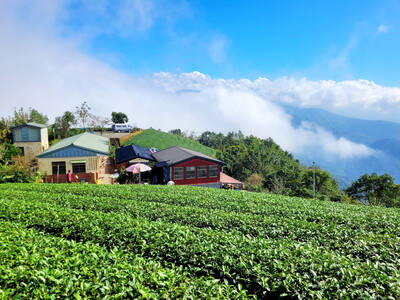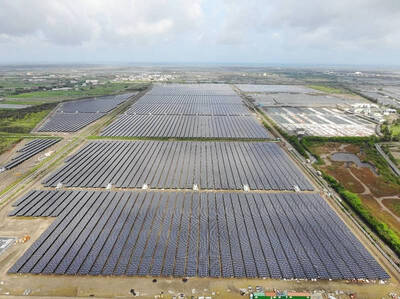She insists she wasn’t deterred from doing Vicky Cristina Barcelona by the poor reviews and equally poor performances of Allen’s recent cinematic adventures. She is shocked to hear that Scoop, the director’s second outing with Johansson, never even got a UK release. “Really?” she says, her voice going up with a tinkle on the second syllable.
Cruz has kept parallel careers running in Hollywood and Spain, taking often uncertain roles in misfiring English-language films, which contrasted with huge European successes such as Volver. She found Allen most unlike the other American directors she has worked with. “He has a great lack of social veneer, and you see so little of that sometimes in places like LA. He speaks only when he has something to say and is really honest.”
She will not hear a bad word about his films, and even says the excruciating Match Point is one of her favorites. She is horrified when I tell her it is the only film I have ever walked out of. Her affection may have something to do with the fact that Vicky Cristina Barcelona is the first English-language film in which she really shines.
To illustrate how unsleazy Allen is, she offers the following anecdote: when it came to the day to shoot the kiss between Cruz and Johansson, rather than spend hours rehearsing the moment of passion and observing it from every angle, Allen announced that he was off to see his dermatologist instead. “He had a spot on his hand, and he was very worried. I was saying to Woody, ‘How do you want us to do this? How do you want to shoot this?’ But he said he had to go for two hours. He didn’t want to wait until the end of the day to go to the doctor, which I thought was brilliant,”
says Cruz.
The spot turned out to be nothing, and Allen galloped through the scene with as little preparation and angst as the rest of the film: “We didn’t rehearse at all, which gives you a lot of vertigo as an actor,” says Cruz. “Often the scenes were done in two takes.” She thinks it is all part of Allen’s strategy to keep the actors — who, as a breed, are prone to “self-analysis and self-destruction,” she says — on their toes.
She admits that she can be especially hard on herself at times. Allen has said that she doesn’t appreciate how terrific she is: “She’s slightly insecure and thinks she’s not going to be able to do something well or that she needs extra takes to do it, which isn’t true at all.”
It may come as some comfort to the rest of the world’s women to hear that she says she doesn’t believe it when people tell her how gorgeous she is. Surely she doesn’t wake up in the mornings, look in the mirror and think “urgh” like the rest of us? Apparently so. It is not soothing to be told that you are beautiful, she says. “Maybe all actors are insecure ... It doesn’t mean you need more compliments, it just means your ego doesn’t really get affected when you hear them, because you don’t believe them.”
I ask her if she ever wishes she were more plain-looking so she could get different parts, but she cuts me off. “I don’t want to talk about that because you make a big deal by talking about it, you know?” Her fluent but accented English meanders a little as she tries to explain herself. “My attention is not there, on the advantages or disadvantages or anything like that. My attention is not there, so by talking about those things you make them a big monster.”
The other thing she won’t talk about is her relationship with Bardem — the pair got together on the set of Vicky Cristina Barcelona — but I am warned twice by her publicist not to ask him about her. It seems she has been burned by discussing her other famous exes; she famously went out with Tom Cruise for three years after his split with Nicole Kidman in 2001.
Cruz seems tired, and no wonder. When we speak in London on a Wednesday evening she is straight off a plane from Los Angeles, and is staying for only six hours before jetting off to Rome, Madrid, back to London and then LA again. She did the same trip 10 days previously, and was scheduled to repeat it before long. It is especially exhausting, says Cruz, because, despite her Madrid roots, she hates siestas. “I always wake up angry,” she says, because as a kid she hated being made to sleep in the afternoon.
She is on this debilitating publicity drive in a fairly unashamed attempt at wooing all the right people ahead of the awards season.

Every now and then, it’s nice to just point somewhere on a map and head out with no plan. In Taiwan, where convenience reigns, food options are plentiful and people are generally friendly and helpful, this type of trip is that much easier to pull off. One day last November, a spur-of-the-moment day hike in the hills of Chiayi County turned into a surprisingly memorable experience that impressed on me once again how fortunate we all are to call this island home. The scenery I walked through that day — a mix of forest and farms reaching up into the clouds

With one week left until election day, the drama is high in the race for the Chinese Nationalist Party (KMT) chair. The race is still potentially wide open between the three frontrunners. The most accurate poll is done by Apollo Survey & Research Co (艾普羅民調公司), which was conducted a week and a half ago with two-thirds of the respondents party members, who are the only ones eligible to vote. For details on the candidates, check the Oct. 4 edition of this column, “A look at the KMT chair candidates” on page 12. The popular frontrunner was 56-year-old Cheng Li-wun (鄭麗文)

“How China Threatens to Force Taiwan Into a Total Blackout” screamed a Wall Street Journal (WSJ) headline last week, yet another of the endless clickbait examples of the energy threat via blockade that doesn’t exist. Since the headline is recycled, I will recycle the rebuttal: once industrial power demand collapses (there’s a blockade so trade is gone, remember?) “a handful of shops and factories could run for months on coal and renewables, as Ko Yun-ling (柯昀伶) and Chao Chia-wei (趙家緯) pointed out in a piece at Taiwan Insight earlier this year.” Sadly, the existence of these facts will not stop the

Oct. 13 to Oct. 19 When ordered to resign from her teaching position in June 1928 due to her husband’s anti-colonial activities, Lin Shih-hao (林氏好) refused to back down. The next day, she still showed up at Tainan Second Preschool, where she was warned that she would be fired if she didn’t comply. Lin continued to ignore the orders and was eventually let go without severance — even losing her pay for that month. Rather than despairing, she found a non-government job and even joined her husband Lu Ping-ting’s (盧丙丁) non-violent resistance and labor rights movements. When the government’s 1931 crackdown